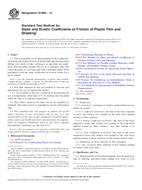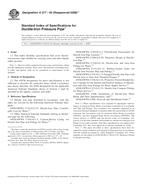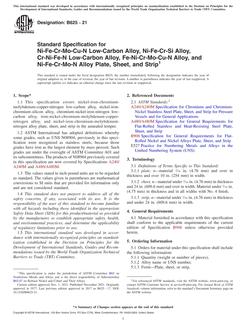1.1 This practice covers what information should be obtained for any individual ground-water site, also known as monitoring location or sampling station. As used in this practice, a site is meant to be a single point, not a geographic area or property. A ground-water site is defined as any source, location, or sampling station capable of producing water or hydrologic data from a natural stratum from below the surface of the earth. A source or facility can include a well, spring or seep, and drain or tunnel (nearly horizontal in orientation). Other sources, such as excavations, driven devices, bore holes, ponds, lakes, and sinkholes, that can be shown to be hydraulically connected to the ground water, are appropriate for the use intended (see ). Note 1There are many additional data elements that may be necessary to identify a site, but are not included in the minimum set of data elements. An agency or company may require additional data elements as a part of their minimum set.
1.2 This practice includes those data elements that will distinguish a site as to its geographical location on the surface of the earth, political regimes, source identifiers, and individual site characteristics. These elements apply to all ground-water sites. Each category of site, such as a well or spring, may individually require additional data elements to be complete. Many of the suggested components and representative codes for coded data elements are those established by the Water Resources Division of the U.S. Geological Survey and used in the National Water Information Systems computerized data base
1.3 The values stated in SI units are to be regarded as the standard. The inch-pound units given in parentheses are for information only.
This standard does not purport to address all of the safety concerns, if any, associated with its use. It is the responsibility of the user of this standard to establish appropriate safety and health practices and determine the applicability of regulatory limitations prior to use.
1.4 This practice offers a set of instructions for performing one or more specific operations. This document cannot replace education or experience and should be used in conjunction with professional judgment. Not all aspects of this practice may be applicable in all circumstances. This ASTM standard is not intended to represent or replace the standard of care by which the adequacy of a given professional service must be judged, nor should this document be applied without consideration of a project’s many unique aspects. The word “Standard” in the title of this document means only that the document has been approved through the ASTM consensus process.
Product Details
- Published:
- 07/01/2004
- Number of Pages:
- 6
- File Size:
- 1 file , 87 KB


